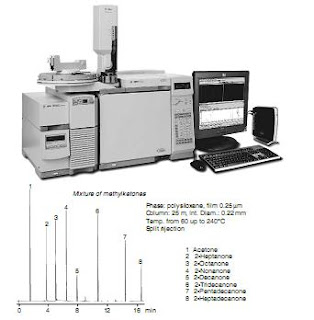A gas chromatograph is composed of several components within a special frame. These components include the injector, the column and the detector, associated with a thermostatically controlled oven that enables the column to attain high temperatures (Figure 2.1). The mobile phase that transports the analytes through the column is a gas referred to as the carrier gas. The carrier gas flow, which is precisely controlled, enables reproducibility of the retention times.
Analysis starts when a small quantity of sample is introduced as either liquid or gas into the injector, which has the dual function of vaporizing the sample and mixing it with the gaseous flow at the head of the column. The column is usually a narrow-bore tube which coils around itself with a length that can vary from 1 to over 100 m, depending upon the type and the contents of the stationary phase. The column, which can serve for thousands of successive injections, is housed in a thermostatically controlled oven. At the end of the column, the mobile phase (carrier gas), passes through a detector before it exits to the atmosphere. Some gas chromatographs models of reduced size have their own electrical supply, enabling them to operate in the field (see Figure 2.19).
In GC there are four operational parameters for a given stationary phase: L, length of the column, u, velocity of the mobile phase (which affects the theoretical efficiency N, see Section 1.6.1), T, temperature of the column and , phase ratio (see Section 2.6.4), which affects the retention factor k (Section 1.7.4). The operating conditions of the chromatograph allows modifications in terms of T and u and therefore affects both the efficiency of the column and the retention factors.


